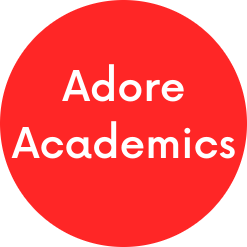Understanding Essay Structure: Hook, Body, and Wrap-Up
One of the top writing tips for middle and high school students is teaching them to confidently follow a clear essay structure. Once students grasp this framework, writing becomes far less overwhelming and much more approachable—even fun!
Looking for a resource that keeps students engaged while sharpening their writing skills? Check out my Summer Essay Writing Prompts With Step-By Step Paragraph Guides from my Teachers Pay Teachers store—a fun and versatile tool that covers multiple writing styles! Students will explore narrative, opinion, informative, descriptive, persuasive, and step-by-step (how-to) writing, all with a sunny seasonal twist. With built-in prompts and clear structure, it’s a great way to keep writing fresh and purposeful all summer long.
Teach the Hook First: Make It Snappy and Purposeful
Start by explaining to your students that the hook is like the opening scene of a movie—it sets the tone and draws the reader in. Without a strong start, even the best ideas might go unnoticed.
Give students multiple examples of hook types:
- A surprising fact
- A rhetorical question
- A short personal story
- A bold or interesting statement
For instance, if the essay topic is about social media, share a sample hook like, “Did you know the average teenager spends over seven hours a day online?” Then, ask students what makes it attention-grabbing. Discuss how a hook should relate to the essay’s topic and invite curiosity.
With ESL learners, encourage hooks that use simple sentence structures and everyday vocabulary. Writing a good hook doesn’t require advanced language skills—just a strong idea and a spark of creativity. Practice with short warm-up activities where students write only the hook, and peer feedback can help boost confidence.
Break Down the Body: Teach Paragraph Planning
Once the hook is in place, it’s time to move on to the body of the essay—the place where students explain and support their ideas. Emphasize that each paragraph should center on one clear idea or reason, introduced with a topic sentence.
Model a paragraph together using a graphic organizer. For example:
Main Idea: School uniforms save time.
Details:
- Students don’t have to choose outfits
- Mornings are less stressful
- Everyone looks equal
This visual aid helps ESL students map their thoughts before writing. Once students get the hang of it, they’ll naturally begin organizing their paragraphs with structure and purpose.
Transitions are another skill worth modeling explicitly. Provide sentence stems like “First,” “Another reason is…,” and “On the other hand…” to help students link their ideas. This also supports language development for ESL learners who are still building their writing fluency.
Encourage clarity over complexity. Let students know it’s okay to use simple words if they help get the message across. Their goal is to be understood—not to sound overly academic. These strategies are among the top writing tips for middle and high school students, especially those developing their English skills—focus on structure, fluency, and clear communication.
Wrap It All Up: A Satisfying Conclusion
Many students finish their final body paragraph and simply stop writing. That’s why it’s important to teach the value of a conclusion—a wrap-up that gives the essay closure.
A good conclusion should:
- Restate the main idea (without copying it word-for-word)
- Summarize key points from the body
- End with a final thought or takeaway
One helpful teaching strategy is to revisit the hook. If the essay started with a question, challenge students to answer it in their conclusion. This technique brings the essay full circle and makes it feel complete.
Model a sample conclusion on the board. For example, “While social media is a big part of teen life, finding a healthy balance is key.” Then discuss as a class what makes the wrap-up effective.
For ESL learners, offer sentence frames to support conclusion writing, such as:
- “In conclusion, I believe…”
- “To sum up, the main reasons are…”
- “This shows that…”
- “In a nutshell…”
Structure Is the Secret to Confidence
Teaching structure isn’t about boxing students in—it’s about giving them a reliable path to follow. Once students know where to start (the hook in the introduction), how to build their case (the body), and how to bring it all together (the conclusion), writing becomes far less intimidating.
This approach is especially beneficial for ESL learners. It gives them a clear roadmap while also strengthening their ability to express complex thoughts in organized, manageable chunks.
Use color-coded organizers, anchor charts, peer feedback stations, and sample essays to reinforce structure visually and interactively. These tools make the learning stick and build students’ independence.

Top Writing Tips for Middle and High School Students 2: Visual Aids & Graphic Organizers That Make Writing Simpler
If you’re looking for top writing tips for middle and high school students, here’s a big one: don’t just tell—show!
Sometimes, all students need is a little visual boost to turn their writing from a tangled mess into something they’re proud of. Whether you’re working with reluctant writers or students still learning English, visual tools can be game-changers. They help students actually see their thoughts take shape—and suddenly, writing isn’t as scary anymore.
Why Visual Aids Work Like Magic
Let’s face it—staring at a blank page can make anyone freeze. Now imagine how much harder it is for a student who’s unsure about grammar, spelling, or even what to write in the first place. That’s where visual aids step in like superheroes.
Charts, diagrams, color-coded maps, and sentence stems can help break down writing into manageable chunks. They give students the structure they need without making things feel overwhelming. With visuals, your students no longer have to juggle everything in their heads—they’ve got a guide right in front of them. Visuals help give student an idea on where to start as it gives them a structured idea on how the essay is expected to flow. This is where flowcharts and mind maps come in handy.
Plus, visual learners (which includes a lot of middle schoolers!) benefit so much more from seeing rather than just hearing or reading instructions. Students appreciate it when they are able to visualize their essay before they start expanding on their points.
The Power of the Classic Graphic Organizer
You’ve probably seen the ol’ hamburger chart at some point—and guess what? It still works. Whether it’s shaped like a burger, a tree, or a ladder, graphic organizers give students a clear idea of how to structure their thoughts from beginning to end.
Start with the basics:
- Introduction box: for the hook and thesis
- Three body paragraph boxes: for main ideas and supporting details
- Conclusion box: for summarizing and restating the main idea
You can print this out as a worksheet, turn it into a colorful anchor chart, or even get students to draw their own versions in their notebooks. ESL learners especially love this because it gives them space to brainstorm vocabulary and translate ideas before drafting full sentences.
Another great one? The Venn Diagram! Use it for compare-and-contrast essays—it’s simple, visual, and makes planning super easy.
Use Color Coding and Icons to Boost Clarity
Here’s a trick: add color. Highlight topic sentences in blue, evidence in green, and explanations in yellow. Suddenly, your students can see what’s missing or what’s working. This makes self-editing way more effective and also makes peer review a lot more focused.
Even simple icons—like a lightbulb for ideas, a chain for connections, or a pencil for details—help guide your more visual students. You can also label steps with fun visuals or emojis: Step 1 = a magnifying glass (for research), Step 2 = a map (for planning), Step 3 = a rocket (for the first draft).
Let’s be real, middle schoolers love anything that feels interactive or a little “different.” A boring outline turns into a mission plan. And suddenly? They’re way more engaged.
Top Writing Tips for Middle and High School Students 3: Transition Words That Actually Make Sense
Helping Students Make Writing That Flows—Without Sounding Like Robots
So, your students know how to write a paragraph. Maybe they’ve even written a few essays. But suddenly, you spot something strange. Every sentence starts with “First,” “Then,” or “Next.” Over and over. Sound familiar?
Transition words are supposed to help writing flow. But if your students are using them the wrong way—or way too often—they can do the opposite.
In this section, you’ll find easy tips to help students use transition words that actually make sense, sound natural, and bring their writing to life.
Teach the “Why,” Not Just the “What”
Students often memorize lists of transition words without knowing what they do. That’s like giving someone a toolbox and forgetting to explain what each tool is for.
Instead of handing them a long list of transitions, group them by purpose. Explain the difference between:
- Time words (first, next, later, after that)
- Addition words (also, furthermore, in addition)
- Cause and effect words (because, therefore, so, as a result)
- Contrast words (however, on the other hand, although)
When students know the purpose of the transition, they’re more likely to use it correctly—and not just toss in “however” because it sounds smart.
Use Real Sentences and Funny Examples
Let’s be honest. Most transition word practice sentences in textbooks are boring. You can do better!
Try this instead:
- Bad transition: I like pizza. First, it has cheese.
- Better: I like pizza because it has cheese, a crispy crust, and way more flavor than boring sandwiches.
Give students silly or unexpected examples to analyze, fix, or rewrite. Let them compare versions of the same sentence so they see how one word can totally change the tone or meaning.
Even better—make them laugh while they learn.
Create a Transition Bank—But Let Students Choose
A transition bank is a great classroom tool. Post a chart or keep mini word banks on desks. But here’s the key: don’t make them use a word from the bank every single time.
Some students feel like they have to throw in a transition at the start of every sentence. That’s how you get:
“First, I woke up. Second, I ate cereal. Third, I brushed my teeth. Fourth, I…”
You get the idea.
Teach students that transitions are tools—not a requirement in every sentence. Help them choose when they’re needed to make ideas connect and when it’s okay to just flow naturally.
Anchor Charts That Actually Stick
Creating and referring to anchor charts regularly ranks among the top writing tips for middle and high school students, as it supports retention, clarity, and independence in the writing process.
Try color-coding different transition types:
- Blue for time
- Green for cause and effect
- Yellow for contrast
- Pink for adding information
Use real examples from student writing (with permission) to show how transitions can be used well—or how they might be misused.
Revising With Transitions in Mind
Once students have a draft, have them go back and highlight their transitions. Ask questions like:
- Do they all make sense?
- Are they used too often?
- Could any of them be replaced with something stronger—or removed altogether?
Turn this into a quick peer-editing activity or checklist before publishing final drafts.
Top Writing Tips for Middle and High School Students 4 : Fun Warm-Up Prompts to Beat Blank Page Anxiety
One of the most common struggles middle and high school students face when writing is simply getting started. Blank page anxiety is real, especially for ESL learners. But the good news? You can reduce writing fear and boost confidence with simple, structured warm-up activities.
Here are several teacher-friendly warm-up prompt strategies that are easy to prep, fun to use, and incredibly effective in setting the tone for productive writing sessions.
Quick “Would You Rather” Writing Prompts
Build opinion writing skills in under 10 minutes.
These prompts are fun, engaging, and perfect for daily practice. Students choose between two options and explain their reasoning. The low-pressure format helps ESL learners express opinions while reinforcing sentence structure and transition words like first, also, and because. Incorporating creative prompts like these is one of the top writing tips for middle and high school students, helping them build confidence while strengthening foundational writing skills.
Examples to try:
- Would you rather be invisible or be able to fly?
- Would you rather eat only one food forever or never eat your favorite food again?
- Would you rather go to school on a boat or in the sky?
Teacher Tip:
Have students write a short paragraph using this structure:
- State their choice
- Give two or three reasons
- Wrap up with a conclusion sentence
Image-Based Prompts
Visual storytelling for students who struggle with words.
Using images is one of the best ways to spark creativity in middle and high school writing classes. A single picture can prompt narrative, descriptive, and even persuasive writing.
How to use it:
- Choose a mysterious or funny image (animals doing silly things, unusual places, unexpected moments).
- Ask students to answer these three questions:
- What is happening in the picture?
- What happened before this moment?
- What will happen next?
Why it works:
Visuals reduce language barriers for ESL students and activate imagination without overwhelming them with grammar rules.
Finish-the-Sentence Starters
Great for building sentence fluency and expanding ideas.
Sentence starters give your students a place to begin. Once they write the first sentence, it’s much easier to keep going. Use this as a 5-minute warm-up at the start of class.
Examples:
- “If I found a time machine, I would…”
- “The scariest sound I’ve ever heard was…”
- “One thing I wish people knew about me is…”
Bonus Tip:
Here’s another one of the top writing tips for middle and high school students. Turn it into a “free write” where students just keep writing until the timer ends. Emphasize fluency, not perfection.
Short Daily Journals with a Twist
Encourages personal reflection and consistent writing practice.
Giving students the chance to reflect helps them build writing fluency and connect personally with language. Use themed journal topics that tie into student life, current events, or silly hypotheticals.
Themes to try:
- “What would you do if you ruled the world for one day?”
- “What advice would you give to your younger self?”
- “Describe your dream weekend from start to finish.”
For ESL learners, provide optional vocabulary banks or sentence starters like:
- “First, I would…”
- “Then, I might…”
- “Finally, I hope…”
By building a solid foundation in writing structure, encouraging clear expression, and supporting language development, we can help students grow more confident in their writing abilities. Whether they’re just starting or refining their skills, these are truly some of the top writing tips for middle and high school students.
Whether you’re looking to prevent the summer slide or just want to keep students creatively engaged, this Summer Essay Writing Prompts With Step-By Step Paragraph Guides from my Teachers Pay Teachers store offers the perfect blend of structure and fun. With a variety of writing styles and prompts to spark imagination, it’s an easy way to build confidence and keep those pencils moving all season long.
Ready to make summer writing stress-free and meaningful? Grab the resource and let the stories begin!
Interested in journal writing for students? Check out my Daily Journal Writing Prompts for Middle School Students—it’s a crowd favourite!
Looking for something before the fall and autumn season? Say no more. Take a look at my Fall Autumn 90 Journal Writing Prompts All Throughout The Season Middle School!








